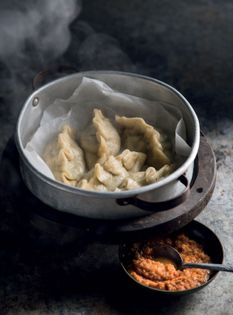Advertisement

Preparation info
- Serves
4
; makes about 20 - Difficulty
Medium
- Ready in
45 min
Appears in
Published 2018
Momos are believed to have originated in Tibet, and then spread via traders throughout the subcontinent. The name has stayed the same, even though the fillings vary widely these days, giving you creative licence to put anything you like into these delicious little parcels. The perfect momo has a shell that’s delicate, yet firm enough to hold in the juices. One bite and the juice will squirt out if you’re not careful. The difficulties come with making the traditional dumpling shape, and for


